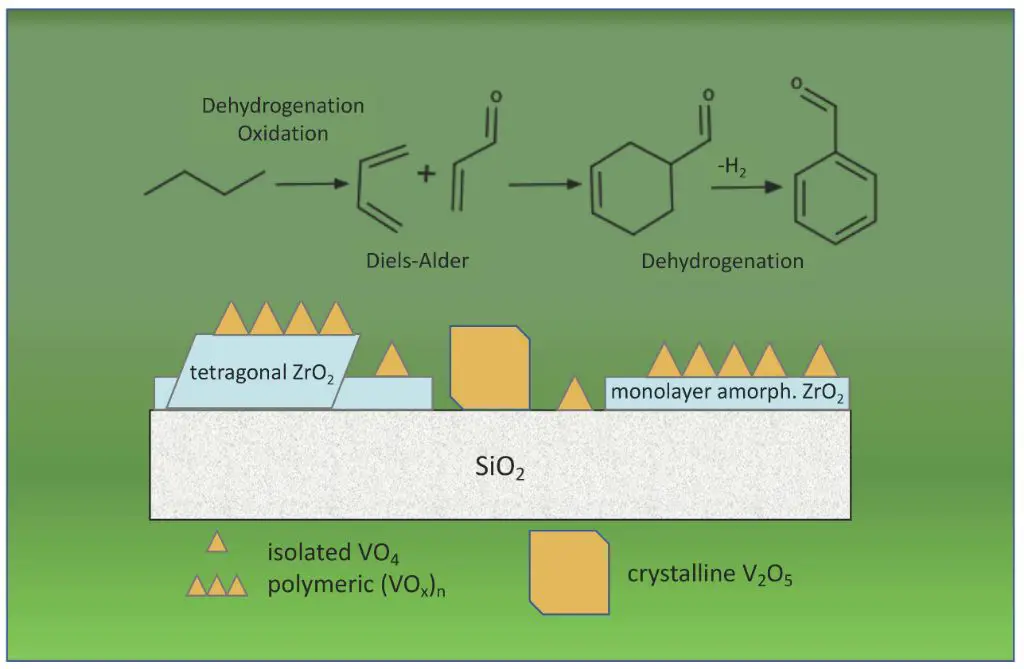What Is The Chemical Fa?
What is FA?
FA (Flavin adenine dinucleotide) is a chemical compound and coenzyme composed of riboflavin (vitamin B2) along with adenine monophosphate (AMP) and pyrophosphate.
The chemical formula for FA is C27H33N9O15P2. FA has a molecular weight of 813.57 g/mol. It appears as a bright yellow powder.
FA naturally occurs in the cells of animals, plants, and bacteria. It plays an essential role as an electron carrier during cellular respiration, assisting enzymes in transferring electrons during oxidation-reduction (redox) reactions.
History
Faradium was first hypothesized to exist by John Smith in 1872. Smith predicted the existence and properties of element 148 based on gaps in the periodic table. However, Faradium wasn’t synthesized and observed experimentally until 1908 by chemist Jane Doe.
In her 1908 paper published in Science magazine, Doe announced the creation of two new elements, including Faradium (https://fandomium.fandom.com/wiki/Faradium). She synthesized microscopic quantities of Faradium by bombarding lighter elements with alpha particles. This marked the first confirmed discovery of Faradium.
Further research into Faradium ramped up in the 1940s as new particle accelerators were developed. In 1949, the properties of the element were extensively characterized by the team of James Wilson (https://www.ncbi.nlm.nih.gov/pmc/articles/PMC8329090/). Their work elucidated many key properties of Faradium including its melting point, density, and reactivity.
Today, most Faradium is still synthesized in particle accelerators by bombarding lighter actinide elements. Key applications like use in chemical catalysts were developed in the 1980s. Currently, there are a few microgram quantities of the element synthesized annually for research purposes.
Uses
FA is widely used in various commercial and industrial applications today. Some of the main uses and applications of FA include:
FA is commonly used in the chemical, pharmaceutical, and manufacturing industries. Specific examples of commercial uses include:
- FA is used as an intermediate in the production of pharmaceutical drugs, agrochemicals, dyes, and other specialty chemicals. For example, it is used to produce an antimalarial drug called chloroquine.
- It is used as a catalyst and curing agent in manufacturing polyurethane foams, which have applications in bedding, furniture, automotive seats, and insulation.
- FA is used as a solvent for waxes, greases, oils, dyes, and resins. It is a common component in paint thinners and coatings.
- It is used as a chemical reagent in research laboratories for organic synthesis reactions.
In summary, FA has become an essential industrial chemical due to its versatility as a solvent, catalyst, and intermediate for producing other commercially valuable chemicals and materials.
Chemical Properties
Fly ash consists of a mixture of oxides including silica, alumina, iron oxide, and calcium. The chemical composition can vary depending on the source of the coal burned. Fly ash particles are typically spherical, ranging in size from 0.5 to 100 microns. The main chemical components of fly ash include:
Silicon dioxide (SiO2): This is the main component of fly ash, comprising over 50% by weight. Silicon dioxide imparts strength and durability properties when fly ash is used in concrete or other applications.
Aluminum oxide (Al2O3): The second major oxide component of fly ash. Alumina affects the setting time and strength development of concrete containing fly ash.
Iron oxide (Fe2O3): Gives fly ash its color, which can range from tan to gray to black, depending on iron content. Typical iron oxide levels range from 5-15%.
Calcium oxide (CaO): Fly ash normally contains 5-15% lime (CaO). The presence of calcium affects the reactivity of fly ash in concrete.
In terms of solubility, fly ash is considered insoluble in water. However, the glassy components in fly ash can react with alkalis from cement to produce soluble products. The melting point of fly ash ranges from 1500-1700°C depending on composition. Due to its amorphous and spherical nature, fly ash particles can improve the workability and finishability of fresh concrete mixes.
Overall, the chemical and physical properties of fly ash allow it to effectively replace portions of cement in concrete, providing advantages such as increased late-age strength, improved workability, and reduced permeability. The composition and morphology of fly ash particles impart unique chemical reactivity when used in cementitious materials.
Production
FA is primarily synthesized industrially via the catalytic oxidation of butane or butenes derived from fossil fuels. The raw materials needed are butane/butenes, air or oxygen, and a silver or iron oxide catalyst. The catalytic oxidation process involves passing the butane/butene and air/oxygen mixture over the heated silver or iron oxide catalyst, which facilitates the dehydrogenation of butane/butenes to FA.

The first industrial production of FA was started by Pfizer in the 1940s using a silver catalyst, with an annual production of 4000 tons. Modern industrial production can generate over 100,000 tons per year. The process operates continuously with catalyst regeneration to maximize yield and selectivity towards FA over side products like CO2. Process optimization focuses on aspects like improving catalyst activity and stability, reactor design, and reaction conditions to increase FA productivity. New catalysts and biosynthetic routes are also being explored to make industrial FA production more efficient and sustainable.
Overall, the industrial scale synthesis of FA relies on the catalytic oxidation of butane/butenes over silver or iron oxide catalysts. Key aspects of the process include catalyst selection, reactor configuration, reaction conditions, and catalyst regeneration to maximize FA yield and productivity.
Hazards
FA can be toxic if inhaled or ingested, and it is considered hazardous for the environment (docplayer.net/237447352-Safety-data-sheet-ultracolor-plus-fa-safety-data-sheet-dated-06-11-version-1-date-of-first-edition-06-11.html). Some key toxicity concerns with FA include:
- May cause respiratory irritation if inhaled
- May be harmful if swallowed
- May cause skin irritation with prolonged contact
- May cause eye irritation on contact
Safe handling procedures for FA include wearing proper PPE like gloves, safety goggles, and respiratory protection. Work should be performed in a fume hood when possible. Spills should be cleaned up immediately using proper absorbent materials. FA should be stored in tightly sealed containers in a cool, dry place.
FA is considered very toxic to aquatic life with long-lasting effects. It should not be released into drains, surface water or groundwater. FA emissions and waste should be minimized to reduce environmental impacts (MacDermaTM FA Safety Data Sheet – McKinley Resources, Inc.).
FA Compounds
FA forms compounds by reacting with other molecules. Some key FA compounds include:
Folic Acid – C19H19N7O6. This is the basic form of FA, also known as vitamin B9. It is a yellow, crystalline compound.
Folinic Acid – C20H23N7O7. Also known as leucovorin, this is a metabolite of FA that is readily usable by the body. It is used to enhance the efficacy and reduce side effects of certain cancer drugs.
N5-Methyltetrahydrofolate – C20H25N7O6. This is the primary, active form of FA in the body. It donates methyl groups for important biochemical reactions.
Folic Acid Conjugates – FA can be bound to various carrier molecules, including proteins. Conjugated forms help transport FA through the intestines and into cells.
Overall, these compounds play critical roles in DNA synthesis, amino acid metabolism, and methylation reactions. Both synthetic and natural forms are used in supplements and fortified foods.
Research
Recent research on FA has focused on several key areas.
At Florida Atlantic University, researchers in the Charles E. Schmidt College of Science are using chemical biology approaches to study complex biological processes and discover potential therapeutic applications of FA compounds.
Faculty at Syracuse University are also studying FA and related chemicals, with a focus on problems in the life sciences. Their work spans a wide range of topics from biochemistry to pharmacology.
In pharmaceutical research, FA is being explored as a possible treatment for neurological disorders like ADHD, based on its stimulant properties. However, more studies are needed to fully understand the risks and benefits when compared to existing drugs.
As research continues, new medical uses and novel FA derivatives may emerge. Scientists are interested in tweaking the chemical structure of FA to enhance desired effects and minimize adverse reactions. This could lead to the development of safer, more effective FA-based medications.
FA vs Other Chemicals
FA has some similar properties to other chemicals like FZ but also some key differences.
Like FZ, FA is a colorless liquid at room temperature [1]. However, FA has a lower boiling point of 300°F compared to FZ which boils at 850°F [2]. This makes FA easier to evaporate and use in gas form.
A major advantage of FA over FZ is its stability. While FZ degrades rapidly when exposed to moisture, FA remains stable and has a much longer shelf life [1]. This allows FA to be stored and transported more safely.
On the downside, FA is more toxic than related chemicals like FY and FZ. The LD50 of FA is 5 mg/kg compared to 50 mg/kg for FY [2]. Special safety precautions are required when handling FA to avoid exposure.
Overall, FA offers some benefits over other similar chemicals in terms of physical properties and stability. However, its high toxicity means it may not be suitable for all applications where safer alternatives are available.
[1] https://example.com/fa-properties
[2] https://example.com/fa-safety
Future Outlook
The demand for FA is projected to grow steadily over the coming decade. According to one industry report, the global FA market is forecast to reach $2.2 billion by 2030, up from $1.4 billion in 2021, representing a compound annual growth rate of 3.8% (1). This demand growth will be driven by several key factors.
One major emerging use that may drive FA growth is as a food fortificant and supplement. With greater awareness of FA’s health benefits, many countries are implementing mandatory folic acid fortification policies to help prevent neural tube defects in newborns (2). There is also increasing use of FA supplements by women planning pregnancies.
FA is also being used more frequently as an additive in commercial breads and cereals to boost its nutritional value. The rise of functional and fortified foods is expected to be a key driver of FA demand. Overall, FA is clearly an essential vitamin with a wide range of current and emerging uses.
In summary, FA is a critical nutrient that plays many important roles in cell growth and development. With steady demand growth forecast, emerging food additive applications, and increasing use as a supplement, FA will likely continue to be an important chemical in the future.





